How could anyone get tired of this way of life....
27 March 2014
20 March 2014
Shades and shapes
Pumice is a volcanic rock that's so porous it floats with the tides onto the beach at False Bluff. During its time in the water pumice is worn into all sorts of different shapes. I have no idea what causes its different shades.
(Pen didn't float in with the piece below.)
13 March 2014
Nature's decorations
Last year I was at False Bluff when the sea grapes ripened. During my latest visit the grapes weren't ripe but from the looks of things there will be a bumper crop. Difficult to see in the first picture, but check out the second one. The sea grape is loaded with what looks kind of like tinsel on a Christmas tree.
06 March 2014
That beautiful palm tree, part IV
The 'nuts and fronds we're dealing with now are from mature trees, trees that were already on False Bluff when this project began. The maintenance issue's going to get much worse when the 400 or so newly planted trees begin to bear. The loss of mature trees from time to time don't make a noticeable difference in grounds maintenance.
Some Bluefields residents who visit me at False Fluff exclaim how pretty the place is, and then chastise me in a quiet aside that the coconut trees I've planted won't bear to their fullest potential because I've planted them too close together. I'm just hoping some agriculturalist somewhere develops a coconut tree that doesn't produce 'nuts!
27 February 2014
That beautiful palm tree, part III
I really like the look of the trees but I'm tired of almost everything else about them. A coconut tree doesn't produce just a single crop of 'nuts a year, the way apple trees produce apples. Ripe coconuts are falling or being picked off a tree at the same time baby coconuts are being formed.
None of the tree's debris rots quickly. Piles of husks that were decades old were a big part of early clearing and cleaning at False Bluff (all those stolen coconuts). Now, on a daily basis, we collect fallen 'nuts in a wheelbarrow for stacking in one pile and drag the fronds to another pile for burning. In the recent past we spread coconuts in a shady spot to sprout for later planting. But I've planted more than 400 young coconut trees since I started this project so the overwhelming need for baby plants has decreased. Now the piles just get bigger, and the coconuts get used 'as needed' around the house or are given to visitors.
None of the tree's debris rots quickly. Piles of husks that were decades old were a big part of early clearing and cleaning at False Bluff (all those stolen coconuts). Now, on a daily basis, we collect fallen 'nuts in a wheelbarrow for stacking in one pile and drag the fronds to another pile for burning. In the recent past we spread coconuts in a shady spot to sprout for later planting. But I've planted more than 400 young coconut trees since I started this project so the overwhelming need for baby plants has decreased. Now the piles just get bigger, and the coconuts get used 'as needed' around the house or are given to visitors.
15 February 2014
That beautiful palm tree, part II
Unless the coconut's going to be used right away, people who harvest them don't take the whole thing. The outer covering, the husk, is removed first, a procedure that makes them much easier to pack and move, since at least half their weight is the husk.
I'm sure there are places where husking is done by machines but there's no place like that near False Bluff. It's done by hand and it's pretty labor intensive work. I recently gave coconuts to a man who works for me, telling him to take every coconut he could pick up or knock off a tree. He and two helpers harvested, husked, and bagged more than a thousand over a three-day period and piled the husks for burning. Two days after they'd gone with all those coconuts, more ripe 'nuts were falling from the trees..........
I'm sure there are places where husking is done by machines but there's no place like that near False Bluff. It's done by hand and it's pretty labor intensive work. I recently gave coconuts to a man who works for me, telling him to take every coconut he could pick up or knock off a tree. He and two helpers harvested, husked, and bagged more than a thousand over a three-day period and piled the husks for burning. Two days after they'd gone with all those coconuts, more ripe 'nuts were falling from the trees..........
http://www.youtube.com/watch?v=tcLipm4hf5Y
Palm trees old, palm trees new, and coconuts waiting to be put in a pile somewhere.
28 January 2014
Join us
A few lots along the Caribbean have been surveyed and are offered for sale.
The photo below is of the preliminary survey - preliminary only because when we cleared the 'calle' (the small roadway between the two sets of lots) we found it to be much too wide and so we'll be adjusting the survey accordingly.
This new phase of the project at False Bluff is called Las Tortugas, an appropriate title to give to a part of Nicaragua's coast where as many as five of the world's seven recognized species of turtles come to hatch...yes, sea turtles hatch at False Bluff.
The section of the Caribbean Coast where we're located is pristine and teeming with wildlife; and although it seems remote, it's only a few miles by water from the small and bustling port town of Bluefields. Unless you're actually in town, on foot or in a taxi, you travel by water - and that gets to be your norm really quickly.
There's a tropical-forest-edged lagoon to our back and the sea to our front with fishing, both salt and fresh water, and swimming, and hiking, and gardening, and bird-watching, and reading...a choice of activities limited mostly by your imagination.
Or you can choose to do absolutely nothing at all, which is a favorite pastime of mine...
Peter Imhof at Caribbean Dream Realty has the details. You can reach him at http://www.caribbean-dream-realty.com/
At False Bluff we agree with Peter's philosophy about the land and extend that philosophy to the land in our stewardship - what he says about the fragility of the two Corn Islands applies equally to all of Nicaragua's Caribbean Coast; and so some covenants and restrictions will apply to lot use and building.
Peter's business philosophy and our long acquaintance are the reasons we've chosen him to act as our agent.
Our blog tells the ongoing story of False Bluff; and there's more information about both False Bluff and Bluefields at https://www.facebook.com/pages/False-Bluff/142899219245180.
This new phase of the project at False Bluff is called Las Tortugas, an appropriate title to give to a part of Nicaragua's coast where as many as five of the world's seven recognized species of turtles come to hatch...yes, sea turtles hatch at False Bluff.
The section of the Caribbean Coast where we're located is pristine and teeming with wildlife; and although it seems remote, it's only a few miles by water from the small and bustling port town of Bluefields. Unless you're actually in town, on foot or in a taxi, you travel by water - and that gets to be your norm really quickly.
There's a tropical-forest-edged lagoon to our back and the sea to our front with fishing, both salt and fresh water, and swimming, and hiking, and gardening, and bird-watching, and reading...a choice of activities limited mostly by your imagination.
Or you can choose to do absolutely nothing at all, which is a favorite pastime of mine...
At False Bluff we agree with Peter's philosophy about the land and extend that philosophy to the land in our stewardship - what he says about the fragility of the two Corn Islands applies equally to all of Nicaragua's Caribbean Coast; and so some covenants and restrictions will apply to lot use and building.
Peter's business philosophy and our long acquaintance are the reasons we've chosen him to act as our agent.
| helpful, reliable, trustworthy | 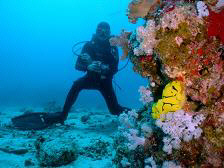 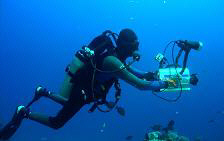  | ||||||||||||||||||
|
|
|
| ||||||||||||||||
 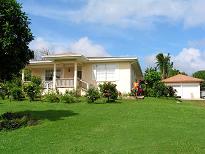  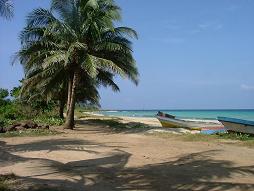 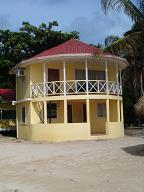 | |||||||||||||||||||
helps you to invest in Nicaragua's Caribbean Coast
| |||||||||||||||||||
Corn Islands
General InfosMaps
For Sale
Sites/LotsHouses Condominiums Commercials
For Rent
HousesCommercials
Atlantic Coast
BluefieldsPearl Lagoon
Mainland
|
Philosophy
The Corn Islands are a fragile biosphere and need a sustainable development, in which
economical, environmental and social aspects participate and improve synchronously. The
real estate has a high co-responsibility.
Integrity, honesty and knowledge of the local characteristics are the trademarks of my
business practice. Very important is time, attention and expertise for my clients, never to
pressure, but there to help you make the good decision.
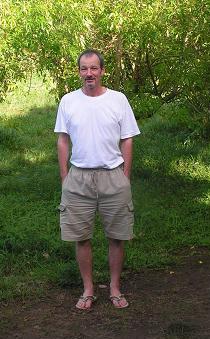 | ||||||||||||||||||
| Copyright 2005 - 2013 by Caribbean Dream Realty | |||||||||||||||||||
Our blog tells the ongoing story of False Bluff; and there's more information about both False Bluff and Bluefields at https://www.facebook.com/pages/False-Bluff/142899219245180.
23 January 2014
That beautiful palm tree, part I
Coconuts are important in Bluefields as well as in other parts of Nicaragua: they're used in all sorts of ways for human consumption as well as for animal food. A Bluefields resident tells me coconuts
are getting harder and harder to come by. Not many
coconut trees are grown inland in either of the country's autonomous
regions and most of the coconuts used in these places come from trees
that grow along the Caribbean coast. Much of what gets
harvested along the RAAS coast goes to RAAN which has caused the price of coconuts in Bluefields to increase.
Since there are so few people who live full-time along any part of Nicaragua's Caribbean coast, theft of coconuts is an ongoing problem. After I opened
the creek from the lagoon to the beach, we had some 'thiefs' who used
the creek because it provided easy access to coconuts from trees growing along the coast. Harvesting coconuts takes awhile whether you're stealing them or not; and, boats were left near our dock for
days. Bags of husked coconuts were then hauled back to the boats and taken to wherever stolen coconuts go. We began to take pictures of
this sort of activity in a very obvious way, asking people to smile
for the camera, although the two in the photo below wouldn't turn around and smile. It's been a year or so since the creek has brought
us anymore coconut 'thiefs.'
But boats still travel up the Caribbean
along the coast, mostly entering the sea where Bluefields Bay meets El Bluff. A neighbor recently told me that the coconut trees on one of his places was
pretty well stripped clean and the only sign of human activity was a
trail of prints to and from the Caribbean...and the huge pile of husks.
16 January 2014
And more wind damage
I'm sorry we lost some coconut trees but was surprised that despite heavy winds the only ones that were downed weren't too healthy to start with. They either never got a good grip on the ground or they were hacked with machetes over and over for years. Many young coconut trees at False Bluff were planted by nature: a 'nut hit the ground and just took root. We've planted more than 400 new trees as we've cleared land, and each new sprouted coconut goes into a hole, dug just for it.
And I'm not too fond of a green net over the roof of the house, but I like it more than I did when it was first installed. If it keeps the roof in place I can like a green net a whole lot.
What I really miss is the little palapa. The first structure, it was built as a field kitchen and continued to be used as a kitchen until the house was built.
Once we had a real kitchen, the palapa was retrofitted and really became a palapa: the plastic walls were removed and benches were added. It became a peaceful shady shady spot right beside the sea.
A part of our landscape for years....and then not.
And I'm not too fond of a green net over the roof of the house, but I like it more than I did when it was first installed. If it keeps the roof in place I can like a green net a whole lot.
What I really miss is the little palapa. The first structure, it was built as a field kitchen and continued to be used as a kitchen until the house was built.
Once we had a real kitchen, the palapa was retrofitted and really became a palapa: the plastic walls were removed and benches were added. It became a peaceful shady shady spot right beside the sea.
A part of our landscape for years....and then not.
08 January 2014
Wind damage
High winds lifted some of the thatching on the house roof. We didn't lose anything off the roof - the winds just moved some things around. So, we did what many people do to thatch roofs along the Caribbean: we straightened out the thatch and put a net on the roof!
The used nets are purchased at El Bluff and are huge, and so need to be retrofitted before installation. A single net is cut into however many pieces are necessary to do the job and the edges are then sewn together.
Installation is done by dragging the entire, newly pieced together net onto the roof where it's spread into place and tied down along strategic points. (In the lower left corner of this picture you can see the remains of another coconut tree we lost to the wind, like the one in the previous post.)
And at the end of a day of work, a nap's a good thing - anywhere you can get it.
The roof is now protected against winds with a bright green net.
The used nets are purchased at El Bluff and are huge, and so need to be retrofitted before installation. A single net is cut into however many pieces are necessary to do the job and the edges are then sewn together.
Installation is done by dragging the entire, newly pieced together net onto the roof where it's spread into place and tied down along strategic points. (In the lower left corner of this picture you can see the remains of another coconut tree we lost to the wind, like the one in the previous post.)
And at the end of a day of work, a nap's a good thing - anywhere you can get it.
The roof is now protected against winds with a bright green net.
29 December 2013
Stormy winds
We had lots of rain and wind at False Bluff during the 2013 rainy season. Frequent storms blew in quickly and just as quickly blew out again.
And, inevitably, we lost some things to the winds. Some of our old coconut trees were the first things to go...
And, inevitably, we lost some things to the winds. Some of our old coconut trees were the first things to go...
23 December 2013
Richmond? False Bluff?
I split my time between projects in both of these locations. One in Virginia, USA; one in RAAS, Nicaragua. There's a wonderful difference between the two that makes for a pretty eventful life.
Other Richmonders have visited me, their trips separated by a couple of years. One couple, in my east-end-of-Richmond neighborhood, has bought property on Bluefields Bay and will move to Bluefields (the small city eight miles by water from False Bluff) full time within the next twelve months to finish building.
The other couple's maneuvering to do the same.
So far visitors to my part of Nicaragua have become that attached that quickly and it's easy to understand why. It goes back in part to that old real estate adage: location, location, location!
Other Richmonders have visited me, their trips separated by a couple of years. One couple, in my east-end-of-Richmond neighborhood, has bought property on Bluefields Bay and will move to Bluefields (the small city eight miles by water from False Bluff) full time within the next twelve months to finish building.
The other couple's maneuvering to do the same.
So far visitors to my part of Nicaragua have become that attached that quickly and it's easy to understand why. It goes back in part to that old real estate adage: location, location, location!
20 December 2013
Passion fruit
Growing somewhere most everywhere in the world, one of these vines produces a fruit for nearly every taste. Each of the many varieties has a flower that is similar in general shape but differs in color and size, as do the fruits of the vines. Next time you check the ingredients of a fruit drink and see 'passion fruit' you might wonder just which passion fruit's juice was added.
At False Bluff we have two varieties. The 'granadilla' (not the 'grenadilla' which is a small tree known for its dark wood) is shown here as flower and not-yet-ripe fruit. The fruit is bright yellow when it's ripe and about the size of a tennis ball:
And the one known along the Caribbean as 'calala' with a purplish flower and a fruit that's much larger than the granadilla, oblong rather than round, and eaten while it's still a lovely green color, seeds and all:
At False Bluff we have two varieties. The 'granadilla' (not the 'grenadilla' which is a small tree known for its dark wood) is shown here as flower and not-yet-ripe fruit. The fruit is bright yellow when it's ripe and about the size of a tennis ball:
And the one known along the Caribbean as 'calala' with a purplish flower and a fruit that's much larger than the granadilla, oblong rather than round, and eaten while it's still a lovely green color, seeds and all:
17 December 2013
How to prepare a coconut for drinking
Palm trees are a major feature at False Bluff so they're in several posts (and will be in more to come).
Here a couple of visitors on the beach enjoy coconuts right off the tree.
And in this short video Julio Castillo demonstrates just how to prep a coconut for instant consumption. (More about Julio on False Bluff's Facebook page.)
Here a couple of visitors on the beach enjoy coconuts right off the tree.
And in this short video Julio Castillo demonstrates just how to prep a coconut for instant consumption. (More about Julio on False Bluff's Facebook page.)
11 December 2013
False Bluff on the Caribbean
When La Costena flies to Big Corn Island, a long lovely stretch of the Caribbean coast is left below and behind. Here's a picture taken from a flight to the island that shows Bluefields, El Bluff, Smokey Lane Lagoon, miles of white sandy beach...and False Bluff.
Subscribe to:
Posts (Atom)





































